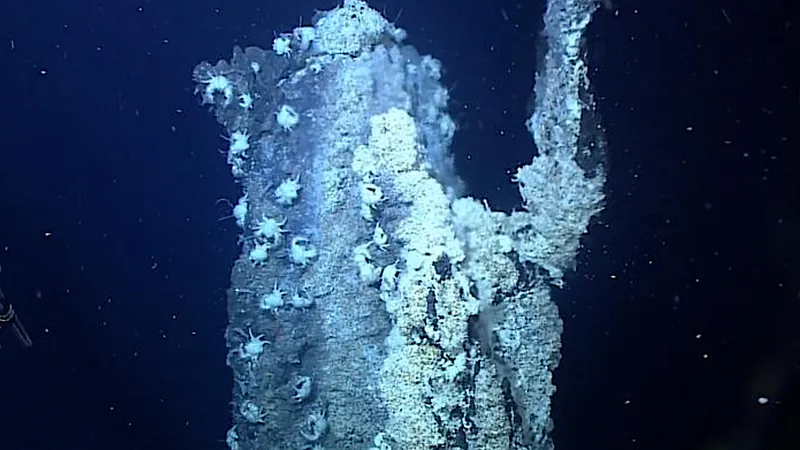
Meet the Marvel: The Deep-Sea Worm That Turns Poison into Gold!
2025-08-30
Author: Mei
The Incredible Life of Paralvinella hessleri
Deep beneath the ocean's surface, in the sweltering cauldron of hydrothermal vents, lives an extraordinary creature known as Paralvinella hessleri. This remarkable deep-sea worm thrives in one of the most toxic environments on Earth, where it faces lethal levels of arsenic and sulfide. Researchers at the Institute of Oceanology in China have uncovered how this worm not only survives but flourishes despite these harsh conditions.
Turning Toxins into Treasure
Published recently in the open-access journal PLOS Biology, this groundbreaking study reveals that P. hessleri ingeniously combines toxic arsenic with sulfide in its cells to create a less harmful mineral called orpiment. This yellow mineral is not only fascinating in its own right, but also a historical treasure once coveted by medieval artists for its vivid hue!
A Glimpse into the Worm’s World
As the only known animal inhabiting the hottest depths of these vents in the western Pacific, P. hessleri's adaptations are nothing short of miraculous. With hot, mineral-rich fluids often comprising over 1% arsenic by body weight, these worms have evolved unique cellular processes. Through advanced techniques like microscopy and chemical analysis, scientists discovered that the worms accumulate arsenic particles in their skin. When combined with sulfide from their surroundings, they form small clumps of orpiment—essentially turning poison into protection.
Breathtaking Discoveries of an Ocean Explorer
Dr. Hao Wang, a co-author of the study, expressed his astonishment upon witnessing the vibrant yellow worms against the stark backdrop of the dark ocean environment. "It was surreal to see how these creatures not only survive but thrive in such an extreme habitat," he commented.
From Deep Sea to Art History
The fascinating twist in this story is the historical significance of orpiment. Once highly valued by Renaissance painters for its vibrant yellow shade, the mineral now serves as a symbol of evolution's ingenuity, showcasing the interconnectedness of nature and culture.
A New Way of Understanding Marine Life
The research findings challenge scientists to rethink how marine organisms interact with their toxic surroundings. The 'fighting poison with poison' model proposed by the authors might open new avenues for understanding the complex relationships in extreme environments, potentially guiding future studies in marine biology and biochemistry.
Conclusion: Nature's Ultimate Survivor
In a world where survival often seems predicated on escaping danger, Paralvinella hessleri shows that sometimes, embracing the threat and transforming it into a defensive strategy is the ultimate survival tactic. As we continue to explore the wonders of our oceans, who knows what other hidden gems await discovery?


 Brasil (PT)
Brasil (PT)
 Canada (EN)
Canada (EN)
 Chile (ES)
Chile (ES)
 Česko (CS)
Česko (CS)
 대한민국 (KO)
대한민국 (KO)
 España (ES)
España (ES)
 France (FR)
France (FR)
 Hong Kong (EN)
Hong Kong (EN)
 Italia (IT)
Italia (IT)
 日本 (JA)
日本 (JA)
 Magyarország (HU)
Magyarország (HU)
 Norge (NO)
Norge (NO)
 Polska (PL)
Polska (PL)
 Schweiz (DE)
Schweiz (DE)
 Singapore (EN)
Singapore (EN)
 Sverige (SV)
Sverige (SV)
 Suomi (FI)
Suomi (FI)
 Türkiye (TR)
Türkiye (TR)
 الإمارات العربية المتحدة (AR)
الإمارات العربية المتحدة (AR)